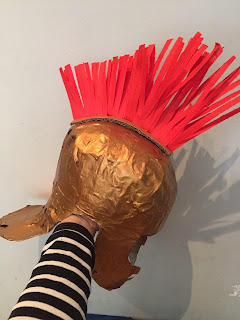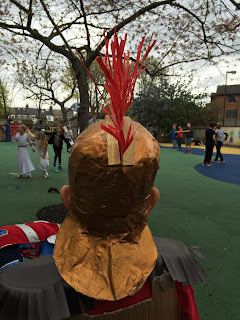Thank God six months ago I started an exercise I LOVE.
Without ballet I would not have made this skirt or started The Sewcial Media blog. Everyone has asked me where did I buy this skirt, and I had to tell them in honesty that I made the skirt. I knew I really wanted to share the pattern, which is not original BTW. I copied it from my teacher's skirt (thanks Alice Crawford). She is a wonderful teacher, patient, kind, professional.
Alternatively you can look away now because let's face it: you can buy the ballet skirt cheaply from online shops where they are lovingly made in sweatshops in China.
But I prefer to lovingly make a useful item of clothing that I can wear forever (it's polyester, so yes, forever), for an art that I love. Ballet is everything I expected it to be, just like football, but harder and more elegant.
 |
| Skirt when laid out flat |
The purpose of the ballet skirt
is to hide my thick thighs and tubby tummy. There is no other reason. I don't want to look pretty or look good at ballet. I have nothing to show off and I am showing off it. I just want to do my plies without feeling exposed, jiggly and wobbly.
 |
| The Pattern |
The second photo is the PATTERN itself, a scaled photo. It has a test square, to scale, for enlargement purposes.
You will need about 1 metre of polyester chiffon as you will cutting on the bias as shown on the second picture, or the pattern. It has to be polyester because life is already busy enough without having to iron one's ballet kit. Besides you will need to be scrunching it before and after the ballet class in order to put it in your kit bag.
You will need 2m black bias binding, 50cm on each side of the skirt and the rest in the middle.
First cut out the cloth on the bias pinning the template on rather than doing a pattern transfer. Then sew the bias binding onto the waist line. Lastly, use a cigarette lighter to burn the wavy edge or the skirt edge to finish and to seal the edge from fraying. Caution: this fabric frays a lot so you need to seal the edge as described.
First cut out the cloth on the bias pinning the template on rather than doing a pattern transfer. Then sew the bias binding onto the waist line. Lastly, use a cigarette lighter to burn the wavy edge or the skirt edge to finish and to seal the edge from fraying. Caution: this fabric frays a lot so you need to seal the edge as described.
 I hope you enjoy this post and that you will be able to design and make your own skirt.
I hope you enjoy this post and that you will be able to design and make your own skirt.Have fun with ballet everyone.
Inspire yourself, if you like, with this video which I watched with interest:
Click here to watch Adult Beginner Ballet in San Francisco, a film by Michelle Ortega.
I think there is something very philosophical about beginner ballet as an adult, as a middle-aged person. It is an innate desire to learn and to be great at something. When you watch this video, you will get the sense that you are not alone. So many people begin as adults, young adults, middle-aged adults, old adults, healthy adult, ill adults, whoever you are, you may fall in love with it, and actually, dare I say it, become great at it. Everything is possible. Do not underestimate the possibilities of the human mind and body.
Finally, here are some photos of yours truly modelling my skirt in a variety of poses.



































